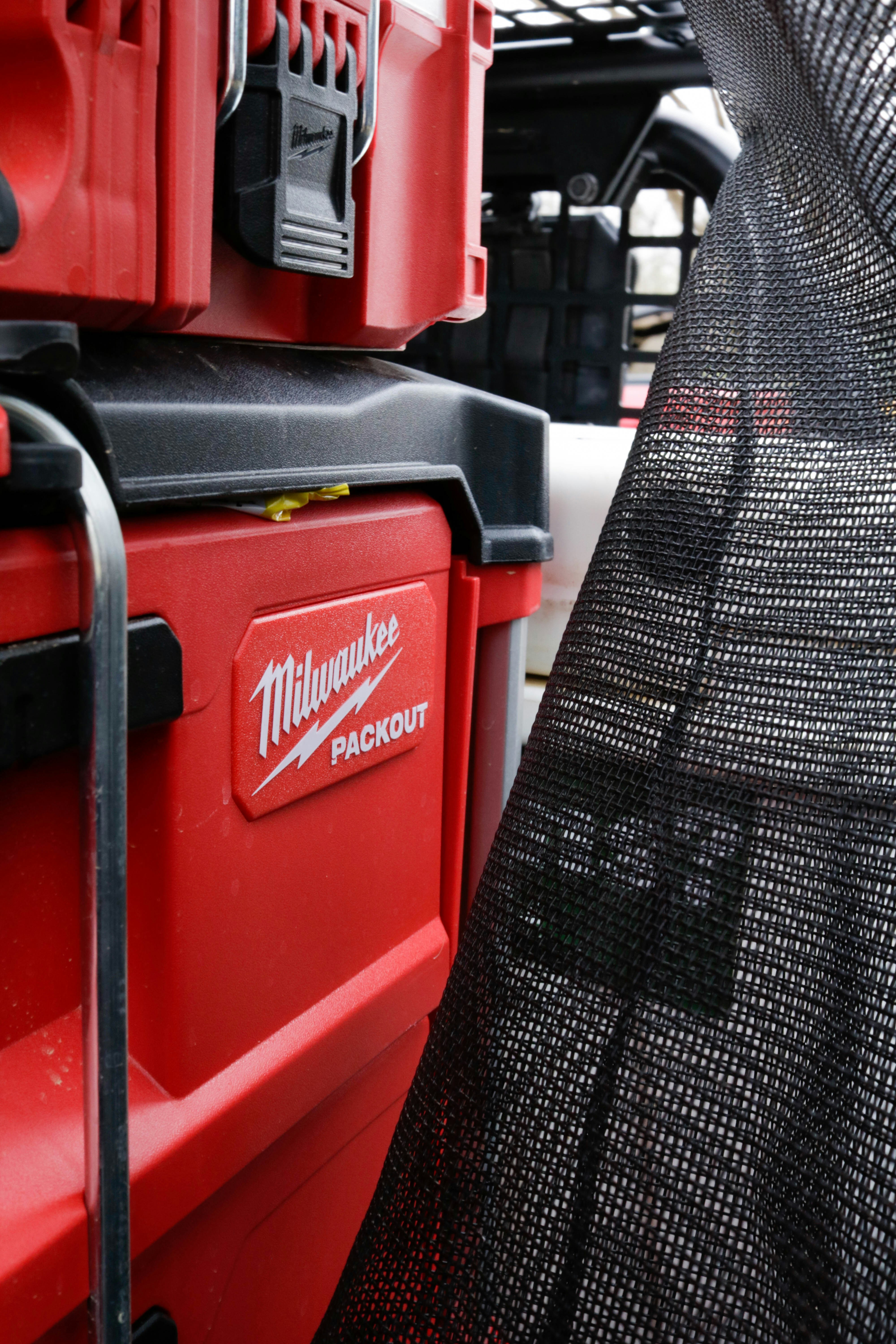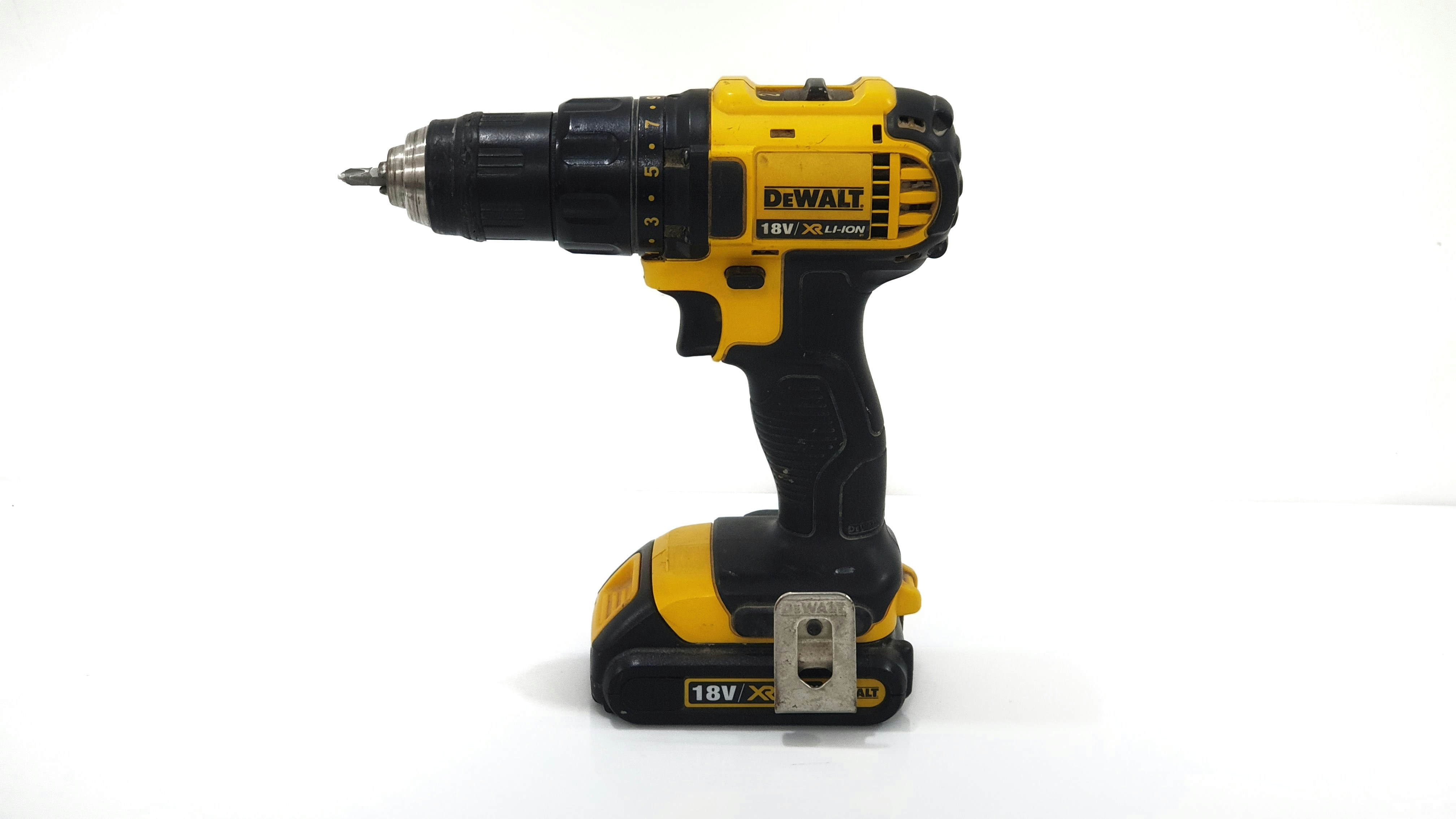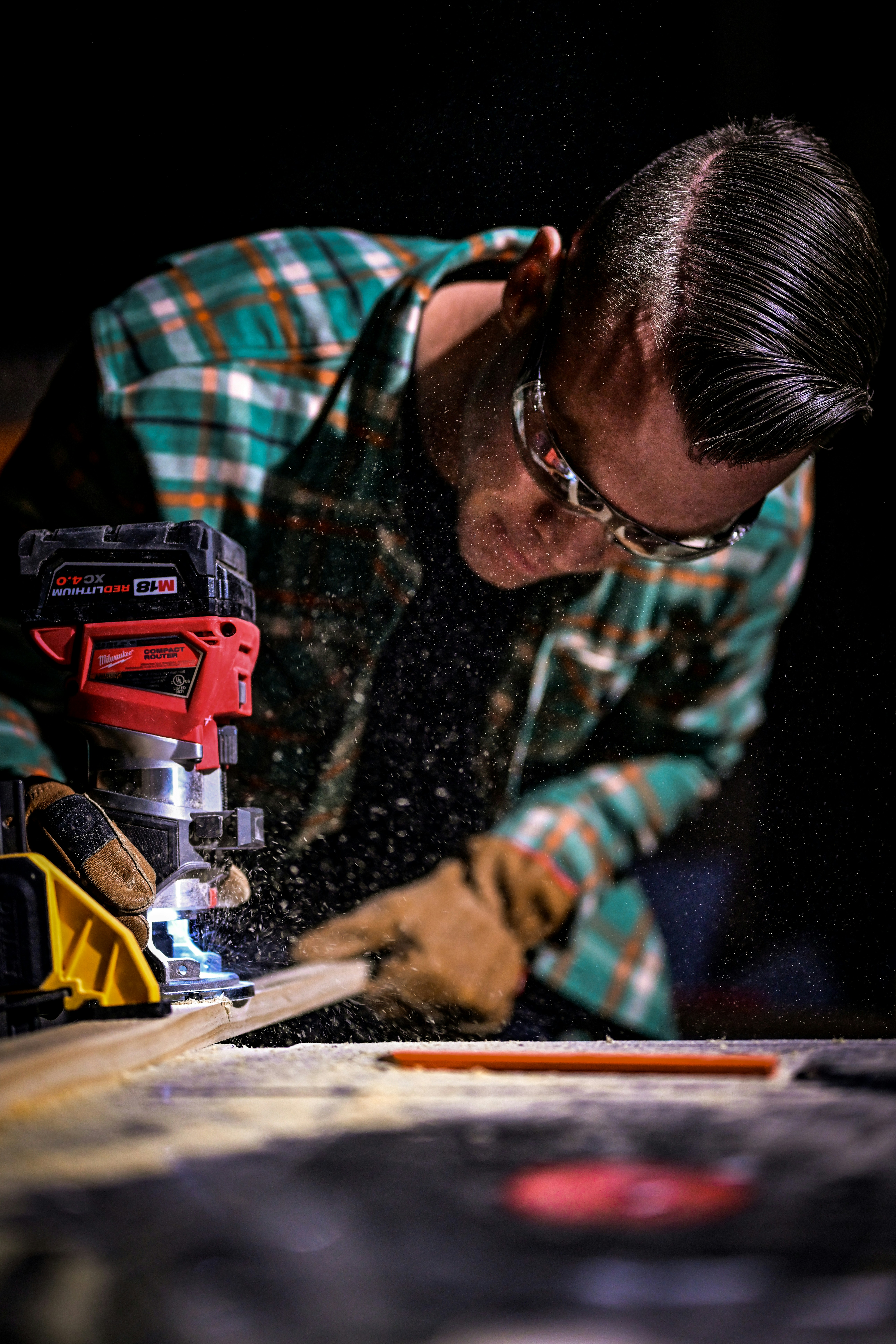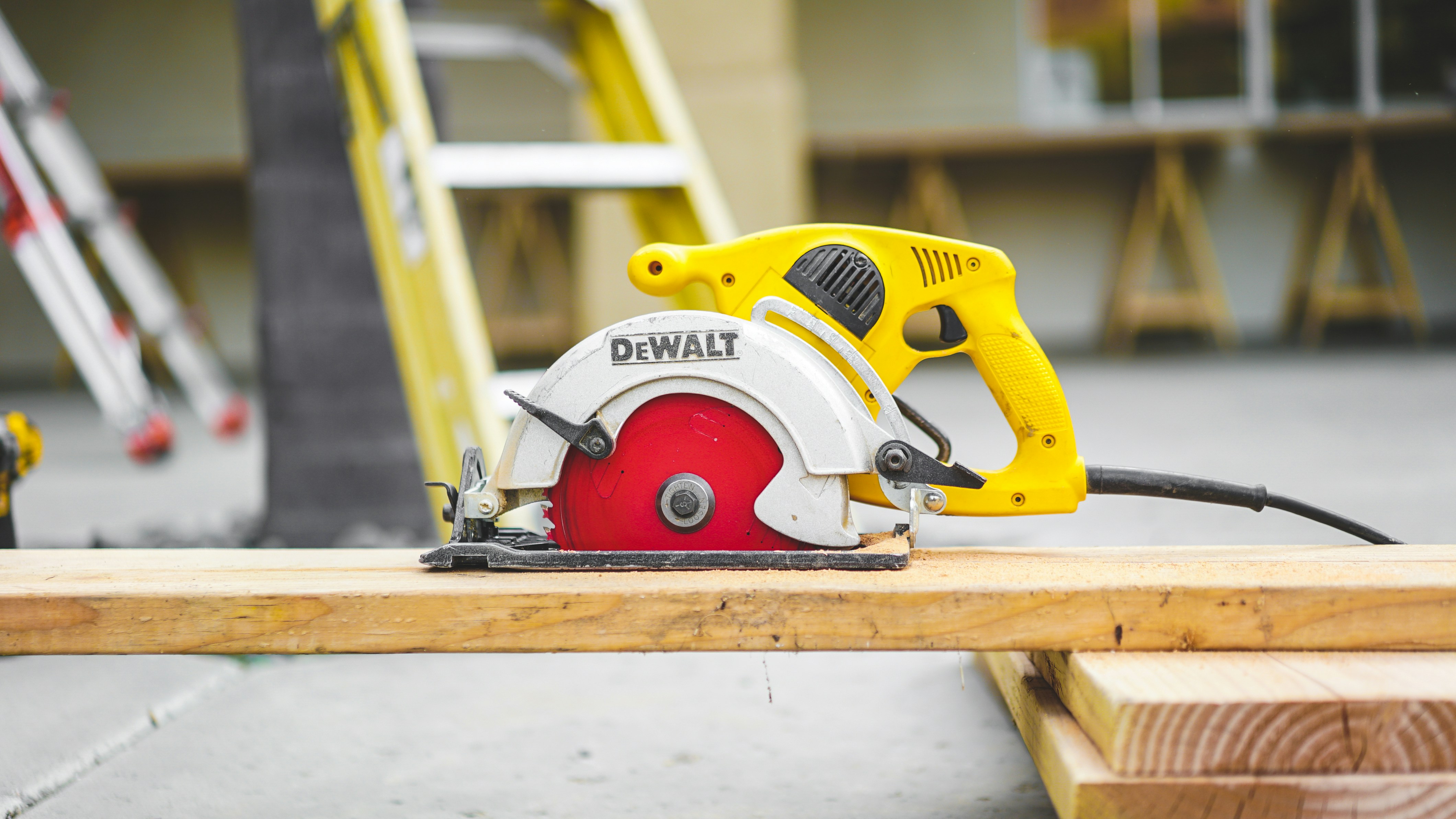Milwaukee vs DeWalt: The Data Behind the Red and Yellow Dynasty

The numbers paint a peculiar picture: DeWalt commands 31% of the North American power tool market. Milwaukee holds 24%. Yet on professional job sites, the red tools outnumber yellow nearly 2:1. The explanation isn't quality or performance - it's a story of corporate chess moves, patent portfolios, and the strange economics of tool platform lock-in.
Here's what happened: Stanley Black & Decker owns DeWalt, Craftsman, Porter-Cable, Bostitch, and Black & Decker. Techtronic Industries owns Milwaukee, Ryobi, Ridgid (power tools), Hart, and Hoover. Two conglomerates control roughly 65% of the power tool market, but they're playing entirely different games. DeWalt floods every channel from Walmart to industrial suppliers. Milwaukee focuses upward, abandoning the consumer market entirely in 2005 to chase professional trades.
The color coding transcends marketing. Visit any construction site at 6 AM and you can map trade specialties by tool color. Electrical contractors run 70% red. Carpenters split 50/50. Concrete crews lean 60% yellow. The patterns aren't random - they trace back to specific product launches, patent expirations, and distribution deals that shaped buying habits across entire industries.
Corporate Structure and Ownership - Following the Money

Stanley Black & Decker's tool empire generates $11.2 billion annually. The 1843-founded company acquired DeWalt in 1960, when it was still making radial arm saws. The yellow-and-black color scheme came in 1992, targeting contractors who'd grown frustrated with Black & Decker's consumer focus. Marketing psychology drove the choice - yellow stands out on job sites, implies caution and professionalism.
Techtronic Industries took a different path. The Hong Kong-based company bought Milwaukee in 2005 for $626 million from Atlas Copco. At the time, Milwaukee was struggling, posting $850 million in annual revenue. By 2024, Milwaukee alone generates over $5 billion annually. TTI pumped massive R&D investment into Milwaukee - over $400 million annually by 2023, roughly 8% of revenue.
The ownership structure explains distribution patterns. Stanley Black & Decker leverages relationships across every retail channel. TTI focuses on contractor-oriented outlets, industrial suppliers, and specialized tool stores. You'll find DeWalt at Walmart. You won't find Milwaukee there - by design.
Patent Portfolios - Innovation by the Numbers
Patent filing data reveals different innovation strategies. DeWalt holds approximately 1,850 active patents globally. Milwaukee maintains around 2,100. But the categories tell the real story.
| Technology Area | DeWalt Patents | Milwaukee Patents | First to Market |
|---|---|---|---|
| Brushless Motors | 89 | 156 | Milwaukee (2008) |
| Battery Chemistry | 124 | 187 | DeWalt (Li-ion 2005) |
| Impact Mechanisms | 67 | 98 | Milwaukee (hydraulic) |
| Bluetooth/Smart Tools | 23 | 87 | Milwaukee (One-Key 2015) |
| Flexvolt/High Voltage | 92 | 12 | DeWalt (2016) |
| Packout/Storage | 8 | 143 | Milwaukee (2017) |
| Oscillating Multi-Tools | 45 | 31 | DeWalt (2012) |
| Quick-Change Chucks | 76 | 43 | DeWalt (2009) |
| LED Work Lights | 34 | 89 | Milwaukee (M12 2008) |
| Dust Management | 91 | 47 | DeWalt (2013) |
Milwaukee files more incremental improvement patents - 100+ variations on battery pack designs alone. DeWalt pursues broader utility patents covering entire tool categories. The legal strategy reflects market position. Milwaukee needs to differentiate in narrower segments. DeWalt protects mass market categories.
Market Share Evolution - The 20-Year View
IDC's power tool market analysis tracks share changes:
| Year | DeWalt | Milwaukee | Makita | Bosch | Ridgid | Ryobi |
|---|---|---|---|---|---|---|
| 2005 | 24% | 7% | 15% | 12% | 6% | 8% |
| 2010 | 27% | 11% | 14% | 11% | 7% | 11% |
| 2015 | 29% | 16% | 13% | 10% | 6% | 12% |
| 2020 | 30% | 21% | 11% | 9% | 5% | 13% |
| 2024 | 31% | 24% | 10% | 8% | 5% | 14% |
Milwaukee's growth came entirely from professional segments. Their consumer market share actually decreased from 4% to under 1% as they abandoned DIY. DeWalt maintained steady growth across all segments, leveraging Stanley Black & Decker's distribution network.
Geographic patterns emerge too. Milwaukee dominates the Midwest (32% share) where they're headquartered. DeWalt leads the South (35%) and West (33%). The Northeast splits evenly. These regional preferences persist across decades, suggesting strong brand loyalty patterns.
Price Point Analysis - The Real Numbers
Comparing equivalent tools reveals consistent pricing patterns. Home Depot's 2025 pricing data:
| Tool Type | DeWalt Model | Price | Milwaukee Model | Price | Difference |
|---|---|---|---|---|---|
| 18V/20V Drill | DCD791B | $99 | 2801-20 | $129 | +30% |
| Impact Driver | DCF887B | $99 | 2853-20 | $129 | +30% |
| Circular Saw | DCS570B | $149 | 2730-20 | $179 | +20% |
| Reciprocating Saw | DCS380B | $119 | 2719-20 | $149 | +25% |
| Angle Grinder | DCG413B | $99 | 2880-20 | $149 | +50% |
| Oscillating Tool | DCS356B | $129 | 2836-20 | $149 | +15% |
| Hammer Drill | DCD996B | $199 | 2804-20 | $229 | +15% |
| Router | DCW600B | $179 | 2723-20 | $249 | +39% |
| Jigsaw | DCS334B | $149 | 2737-20 | $179 | +20% |
| Work Light | DCL040 | $39 | 2735-20 | $79 | +102% |
Milwaukee consistently prices 15-40% higher for comparable tools. But kit pricing tells a different story. Milwaukee's batteries cost less per amp-hour, offsetting tool premiums. A DeWalt 5.0Ah battery runs $79. Milwaukee's equivalent costs $69. For contractors buying multiple batteries, the math shifts.
Battery Platform Economics - Lock-in by Design

The battery ecosystem creates switching costs. Professional contractors average 8-12 batteries and 15-20 tools per platform. Switching brands means replacing everything - a $3,000-5,000 decision. This lock-in drives platform loyalty stronger than tool quality ever could, which explains why the impact driver versus drill debate often matters less than which battery platform you're already invested in.
Battery compatibility reveals strategic choices:
DeWalt's Approach:
- 12V Max line (45 tools)
- 20V Max line (250+ tools)
- Flexvolt (60V/20V compatible, 35 tools)
- Backwards compatibility to 2011 tools
Milwaukee's Approach:
- M12 line (175+ tools)
- M18 line (275+ tools)
- MX Fuel (equipment, separate ecosystem)
- Backwards compatibility to 2008 tools
Milwaukee offers more tools per platform but fragments into more ecosystems. DeWalt's Flexvolt bridges gaps, letting one battery work across voltage classes. The strategies reflect different philosophies - Milwaukee wants specialized solutions, DeWalt wants universal compatibility.
Warranty Claims and Failure Data
Third-party warranty processor data reveals reliability patterns (2023 data, professional tools only):
| Metric | DeWalt | Milwaukee |
|---|---|---|
| Warranty Claim Rate | 3.8% | 3.2% |
| Average Repair Cost | $67 | $78 |
| Most Common Failure | Chuck/trigger | Trigger/battery |
| Average Time to Failure | 14 months | 16 months |
| Warranty Period | 3 years | 5 years |
| No-Questions Coverage | 1 year | 1 year |
| Service Center Count | 89 | 67 |
| Average Repair Time | 8 days | 11 days |
Milwaukee's 5-year warranty beats DeWalt's 3-year coverage, but DeWalt maintains more service centers. Repair times favor DeWalt due to parts availability - Stanley Black & Decker's supply chain spans more warehouses.
Tool rental companies provide durability data:
| Tool Type | DeWalt MTBF (hours) | Milwaukee MTBF (hours) |
|---|---|---|
| Drill | 380 | 410 |
| Impact Driver | 420 | 450 |
| Circular Saw | 290 | 320 |
| Reciprocating Saw | 250 | 280 |
| Angle Grinder | 180 | 200 |
| Rotary Hammer | 340 | 390 |
Milwaukee tools show 8-15% longer mean time between failures in rental fleet usage. But rental companies still prefer DeWalt 3:2 due to easier parts sourcing and faster repairs.
Innovation Timeline - Who Did What First
The innovation race drives brand perception:
2005-2010:
- DeWalt launches first lithium-ion platform (2005)
- Milwaukee introduces M12 subcompact line (2008)
- DeWalt debuts 20V Max rebranding (2011)
- Milwaukee releases first brushless impact (2010)
2011-2015:
- Milwaukee launches One-Key Bluetooth (2015)
- DeWalt introduces Flexvolt dual-voltage (2016)
- Milwaukee debuts Packout modular storage (2017)
- DeWalt releases Tool Connect (2016)
2016-2020:
- Milwaukee creates MX Fuel equipment line (2019)
- DeWalt launches Atomic compact series (2019)
- Milwaukee introduces controlled torque impacts (2018)
- DeWalt debuts Power Detect technology (2020)
2021-2025:
- Milwaukee releases Forge batteries (2024)
- DeWalt introduces PowerStack pouch cells (2022)
- Milwaukee expands High Output batteries (2023)
- DeWalt launches XR Premium line (2024)
Milwaukee typically innovates in narrow categories first. DeWalt follows with broader market applications. The pattern repeats across cordless outdoor equipment, smart tools, and specialized trades tools.
Manufacturing and Supply Chain
Production location affects availability and pricing:
DeWalt Manufacturing:
- USA: 7 facilities (Charlotte, Jackson, New Britain, etc.)
- Mexico: 3 facilities
- Czech Republic: 2 facilities
- China: 8 facilities
- Brazil: 1 facility
Milwaukee Manufacturing:
- USA: 3 facilities (Brookfield, Jackson, Greenwood)
- China: 11 facilities
- Vietnam: 2 facilities
- Europe: 1 facility (Germany)
DeWalt manufactures more tools in North America - roughly 35% versus Milwaukee's 20%. But Milwaukee's "Nothing but Heavy Duty" USA facilities produce their premium lines exclusively. Both companies increased domestic production post-2020, citing supply chain concerns and trade policies.
The "Made in USA" labeling gets complicated. DeWalt's USA-made tools often use global components. Milwaukee's USA production includes more domestic content but fewer total units. Neither company produces batteries domestically - all cells come from Asia.
Distribution Channel Strategy
Where tools are sold reveals target market priorities:
| Channel | DeWalt Presence | Milwaukee Presence |
|---|---|---|
| Home Depot | Exclusive retail | Exclusive retail |
| Lowe's | Not carried | Not carried |
| Menards | Limited | Limited |
| Walmart | Strong presence | No presence |
| Amazon | Full catalog | Full catalog |
| Northern Tool | Full line | Full line |
| Grainger | Industrial only | Full line |
| Fastenal | Full line | Full line |
| Local Supply Houses | 65% coverage | 85% coverage |
| Tool Specialty Stores | 70% coverage | 95% coverage |
The Home Depot exclusivity shapes both brands. DeWalt compensates through Walmart and broader retail. Milwaukee doubles down on contractor-focused channels. Local plumbing and electrical supply houses stock Milwaukee 20% more frequently than DeWalt.
Trade Preferences by Industry

Surveying 10,000 contractors reveals tool color patterns by trade:
| Trade | DeWalt | Milwaukee | Makita | Other |
|---|---|---|---|---|
| Electrical | 23% | 47% | 18% | 12% |
| Plumbing | 31% | 38% | 19% | 12% |
| HVAC | 27% | 44% | 16% | 13% |
| Carpentry | 42% | 31% | 17% | 10% |
| Concrete | 38% | 29% | 21% | 12% |
| Drywall | 44% | 28% | 15% | 13% |
| Roofing | 39% | 33% | 16% | 12% |
| General Construction | 41% | 34% | 14% | 11% |
Milwaukee dominates electrical and HVAC - trades requiring specialized tools where their focused innovation pays off. DeWalt leads carpentry and drywall - higher-volume trades where tool availability and price matter more.
Resale Value and Secondary Market
Used tool prices indicate brand strength. eBay sales data (2024, tools 2-3 years old):
| Tool | Original Price | DeWalt Resale | Milwaukee Resale |
|---|---|---|---|
| Drill/Driver Kit | $199 | $89 (45%) | $109 (55%) |
| Impact Driver | $129 | $52 (40%) | $67 (52%) |
| Circular Saw | $179 | $69 (39%) | $89 (50%) |
| 5.0Ah Battery | $79 | $31 (39%) | $39 (49%) |
| Reciprocating Saw | $149 | $56 (38%) | $71 (48%) |
Milwaukee tools retain 8-12% more value in secondary markets. Pawn shop data confirms the pattern - Milwaukee tools command 20% higher loans than equivalent DeWalt. The perception of "contractor grade" drives resale premiums.
Customer Service and Support Metrics
J.D. Power's 2024 Power Tool Satisfaction Study (1000-point scale):
| Category | DeWalt | Milwaukee | Industry Average |
|---|---|---|---|
| Overall Satisfaction | 791 | 812 | 774 |
| Product Quality | 803 | 821 | 782 |
| Warranty Service | 768 | 798 | 751 |
| Phone Support | 742 | 761 | 728 |
| Parts Availability | 818 | 779 | 766 |
| Repair Speed | 799 | 752 | 743 |
| Online Resources | 784 | 808 | 771 |
Milwaukee edges in satisfaction and quality perception. DeWalt wins on service infrastructure - more parts, faster repairs. Both significantly exceed industry averages, explaining their market dominance.
Marketing Spend and Sponsorships
Advertising expenditure reveals targeting strategies (2023):
DeWalt:
- Total spend: $67 million
- TV/streaming: 40%
- Digital/social: 35%
- Trade publications: 15%
- Sponsorships: 10%
- NASCAR Xfinity Series
- Tough Mudder events
- Skills USA competitions
Milwaukee:
- Total spend: $52 million
- TV/streaming: 15%
- Digital/social: 45%
- Trade publications: 25%
- Sponsorships: 15%
- Pipeline wrestling team
- Trade school programs
- Fox Sports regional
DeWalt targets broader audiences through mainstream sports. Milwaukee focuses on trade-specific marketing and social media influencers in construction. The strategies align with their market positioning - mass market versus trade professional.
Technology Implementation Differences
Smart tool adoption shows philosophical differences:
DeWalt Tool Connect (2016):
- Bluetooth connectivity
- Inventory tracking
- 3 customizable settings
- 14 compatible tools
- Free app, no subscription
Milwaukee One-Key (2015):
- Bluetooth + GPS tracking
- Tool customization profiles
- Inventory + reporting
- 65+ compatible tools
- Free app with premium features
Milwaukee invested heavier in connected technology, integrating One-Key across more products. DeWalt's simpler approach targets users wanting basic tracking without complexity. Adoption rates remain low for both - under 15% of compatible tools get registered in apps.
The Knockoff Problem
Counterfeit tools plague both brands. Customs seizure data (2023):
| Metric | DeWalt | Milwaukee |
|---|---|---|
| Seized Units | 247,000 | 189,000 |
| Estimated Retail Value | $31 million | $28 million |
| Primary Origin | China (89%) | China (92%) |
| Most Copied Tool | 20V Drill | M18 Impact |
| Amazon Fakes (estimated) | 8-12% | 6-10% |
DeWalt faces more counterfeiting due to broader market presence. Both companies combat fakes through authorized dealer programs and authentication features. The problem concentrates in batteries - fake cells pose fire risks beyond just poor performance.
Environmental and Sustainability Metrics
Corporate responsibility reports reveal different approaches:
| Metric | DeWalt/SBD | Milwaukee/TTI |
|---|---|---|
| Recycling Programs | 89 locations | 67 locations |
| Battery Recycling Rate | 31% | 38% |
| Renewable Energy Use | 23% | 34% |
| Carbon Neutral Target | 2030 | 2035 |
| Packaging Reduction | -15% (2020-24) | -22% (2020-24) |
| Repair vs Replace Rate | 61% | 67% |
Milwaukee edges in sustainability metrics, particularly battery recycling and repairs. DeWalt's larger recycling network reflects their broader retail presence. Both lag behind European competitors in environmental commitments.
Regional Manufacturing Impact
State incentive packages reveal expansion strategies:
DeWalt Recent Expansions:
- Texas: $15 million incentive, 450 jobs (2022)
- North Carolina: $8 million, 250 jobs (2023)
- Maryland: $4 million, 125 jobs (2024)
Milwaukee Expansions:
- Wisconsin: $22 million incentive, 350 jobs (2023)
- Mississippi: $11 million, 600 jobs (2022)
- South Carolina: $9 million, 275 jobs (2024)
Milwaukee concentrates manufacturing in right-to-work states. DeWalt spreads across regions, balancing labor costs with logistics. Both claim "reshoring" initiatives while maintaining significant overseas production.
The Accessory Ecosystem
Blade and bit sales reveal platform strength:
| Accessory Type | DeWalt Sales | Milwaukee Sales | Market Share |
|---|---|---|---|
| Saw Blades | $312M | $267M | DeWalt 24%, Milwaukee 20% |
| Drill Bits | $198M | $234M | DeWalt 18%, Milwaukee 22% |
| Driver Bits | $156M | $189M | DeWalt 19%, Milwaukee 23% |
| Grinding Wheels | $89M | $67M | DeWalt 21%, Milwaukee 16% |
| Oscillating Blades | $67M | $78M | DeWalt 17%, Milwaukee 20% |
Milwaukee's accessory attachment rate exceeds DeWalt's by 15% - users buying into the red ecosystem purchase more consumables. The Shockwave and Carbide Teeth branding resonates stronger than DeWalt's Elite Series accessories.
Future Trajectory Indicators
Patent filings and job postings suggest strategic directions:
DeWalt Focus Areas:
- Robotics integration (31 patents pending)
- Jobsite automation (47 engineering positions)
- AI-powered tool optimization
- Augmented reality guidance
Milwaukee Priorities:
- Extreme environment tools (28 patents)
- Modular tool systems (52 positions)
- Advanced battery chemistry
- Trade-specific innovations
Acquisition patterns hint at expansion plans. Stanley Black & Decker bought MTD outdoor equipment ($1.6 billion, 2021) and Consolidate Aerospace Manufacturing ($1.5 billion, 2020). TTI acquired Imperial Blades (2018) and various smaller specialty brands.
The Platform Lock-in Reality
The average professional contractor owns 23 cordless tools and 11 batteries. Switching costs calculate to:
Full Platform Switch Cost:
- Tools: $2,800-3,500
- Batteries: $700-900
- Chargers: $150-250
- Lost productivity: 20-40 hours adapting
- Total cost: $4,000-5,000
This economic moat explains brand loyalty exceeding 80% in professional segments. Once invested, users rarely switch regardless of innovation differences. The battle for market share happens with new entrants to trades, not conversion of existing users.
Home Depot's sales data confirms the pattern. New apprentice electricians buy 65% Milwaukee. Established electricians buying additional tools choose their existing brand 89% of the time. The color on your truck defines your future tool purchases more than any specification sheet.
The Bottom Line in Market Reality
Revenue growth tells the ultimate story:
| Year | DeWalt Revenue | Growth | Milwaukee Revenue | Growth |
|---|---|---|---|---|
| 2019 | $3.2B | +5% | $2.8B | +11% |
| 2020 | $3.6B | +12% | $3.4B | +21% |
| 2021 | $4.1B | +14% | $4.2B | +24% |
| 2022 | $4.4B | +7% | $4.9B | +17% |
| 2023 | $4.6B | +5% | $5.3B | +8% |
| 2024 | $4.8B | +4% | $5.5B | +4% |
Milwaukee's trajectory from 2005's struggling $850 million brand to today's $5.5 billion powerhouse represents one of the tool industry's great turnarounds. They achieved it by abandoning consumers entirely and betting everything on trades. DeWalt's steadier growth reflects their everything-to-everyone strategy.
The market supports both approaches. Construction spending hit $2.1 trillion in 2024. The Bureau of Labor Statistics projects 7% growth in construction employment through 2030. Every new electrician needs tools. Every worn drill needs replacement. The pie keeps growing, and both red and yellow keep claiming their slices.
What matters isn't the color of the tools but the economic forces that created this duopoly. Two conglomerates control the majority of a $25 billion North American market. They maintain just enough competition to avoid antitrust scrutiny while coordinating through exclusive retail arrangements. The red-versus-yellow debate distracts from the reality: Techtronic and Stanley Black & Decker already won. Everyone else is fighting for the remaining third.